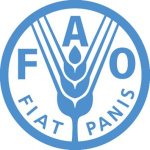- Industry: Agriculture
- Number of terms: 87409
- Number of blossaries: 0
- Company Profile:
Established in October 1945 with the objective of eliminating hunger and improving nutrition and standards of living by increasing agricultural productivity, FAO coordinates the efforts of governments and technical agencies in programs for developing agriculture, forestry, fisheries, and land and ...
1. An electrical treatment of cells that induces transient pores, through which DNA can enter the cell.
2. The introduction of DNA or RNA into protoplasts or other cells by the momentary disruption of the cell membrane through exposure to an intense electric field.
Note: Although the precise mechanism of electroporation is poorly understood, pores are thought to form by the local polarization of the cell membrane when it is exposed to a high electric potential. These openings persist for a variable amount of time, depending upon the temperature at which the cell is treated. Macro-molecules, such as DNA or RNA, enter through these openings either through diffusion or through electrophoretic movement. The membrane openings then re-seal, capturing introduced DNA and preventing escape of the cell contents.
Industry:Biotechnology
1. An enclosed chamber in which substances are heated under pressure to sterilize utensils, liquids, glassware, etc., using steam. The routine method uses steam pressure of 103.4×10<sup>3</sup> Pa at 121<sup>°</sup>C for 15 minutes, or longer to allow large volumes to reach the critical temperature.
2. A pressure cooker used to sterilize growth medium and instruments for tissue culture work.
Industry:Biotechnology
1. An organism lacking pigmentation, due to genetic factors. The condition is <i>albinism</i>, q.v.
2. A conspicuous plastome (plastid) mutant involving loss of chlorophyll.
Industry:Biotechnology
1. Animal that has both male and female reproductive organs, or a mixture of male and female attributes.
2. A plant whose flowers contain both stamen and carpels.
Industry:Biotechnology
1. As a verb, this means to transfer DNA, RNA or protein to an immobilizing matrix.
2. As a noun, it usually refers to the autoradiograph produced during the Southern or northern blotting procedures. The variations on this theme depend on the molecules:
– Southern blot: the molecules transferred are DNA molecules, and the probe (q.v.) is DNA.
– northern blot: the molecules transferred are RNA, and the probe is DNA.
– western blot: the molecules transferred are protein, and the probe is labelled antibody.
– Southwestern blot: the molecules transferred are protein, and the probe is DNA.
– dot blot: DNA, RNA or protein are dotted directly onto the membrane support, so that they form discrete spots.
– colony blot: the molecules (usually DNA) are from colonies of bacteria or yeast growing on a bacteriological plate.
Industry:Biotechnology
1. Asexual fusion of protoplasts from somatic cells of genetically different parents.
2. Hybridization by induced fusion of cells (protoplasts) from two contrasting genotypes for production of hybrids or cybrids which contain various mixtures of nuclear and/or cytoplasmic genomes, respectively.
Industry:Biotechnology
1. Asexual fusion of protoplasts from somatic cells of genetically different parents.
2. Hybridization by induced fusion of cells (protoplasts) from two contrasting genotypes for production of hybrids or cybrids which contain various mixtures of nuclear and/or cytoplasmic genomes, respectively.
Industry:Biotechnology
1. Changes in cells, tissues or organs due to disease.
2. The reduction in size or complete loss of organs during evolution.
Industry:Biotechnology
1. Codons which do not code for an amino acid. They signal ribosomes to terminate protein synthesis. The codons are UAA, UAG and UGA, and have been termed ochre, amber and opal, respectively. Also known as stop codons or termination codons. Often two of these codons are found together at the end of a coding sequence of RNA.
2. In the Sanger method of DNA sequencing, di-deoxynucleoside triphosphates are added as chain terminators in the synthesis of a complementary DNA strand.
Industry:Biotechnology
1. Continues to exist or to remain attached.
2. Chemicals with a long inactivation time, such as some pesticides, which may accumulate in the food chain.
Industry:Biotechnology
